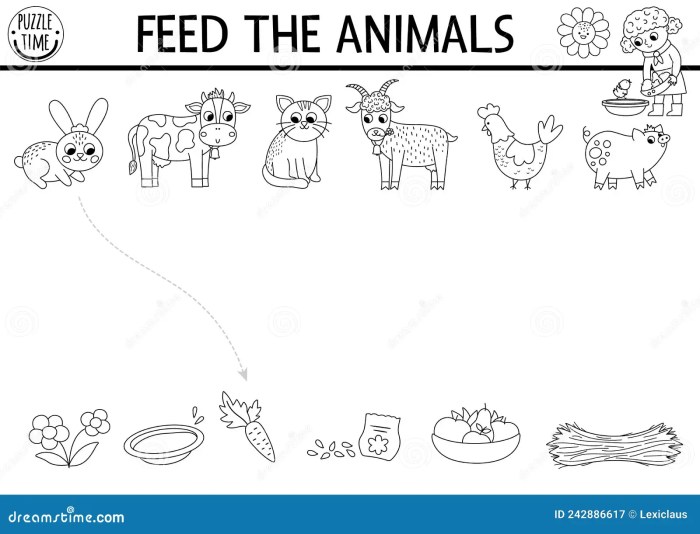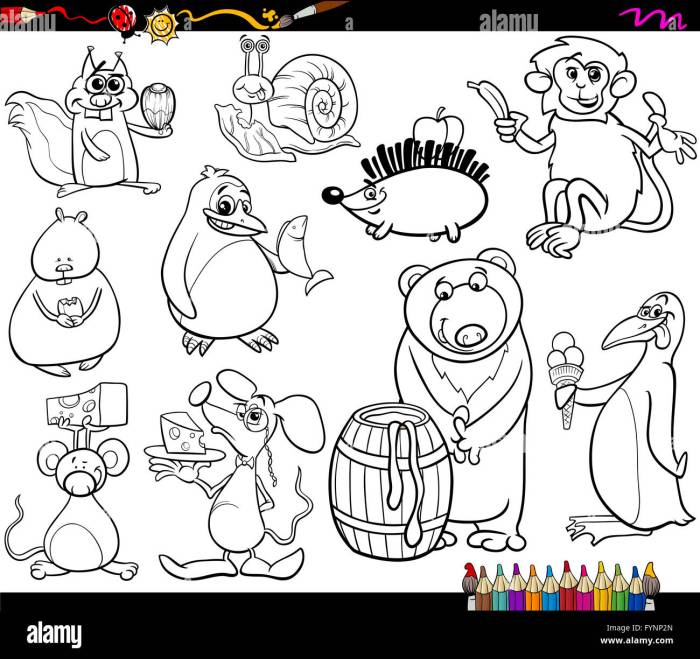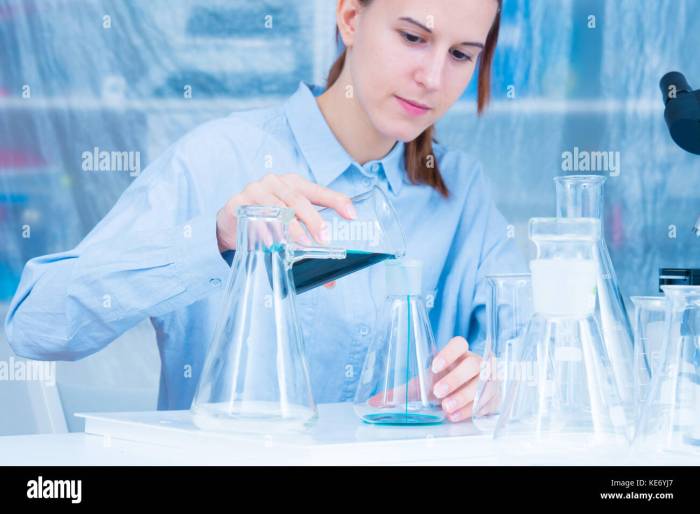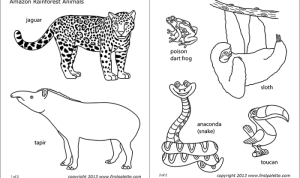The History of Food Coloring and Animal Testing

Animal testing food coloring – The development of food coloring is intrinsically linked to advancements in chemistry and a parallel, often ethically contested, history of animal testing. Early food colorings, derived from natural sources, didn’t necessitate the same level of rigorous testing as the synthetic dyes that emerged later. However, as synthetic dyes became more prevalent, concerns about their safety led to the adoption of animal testing protocols.
Early Food Coloring and Animal Testing Methods
The earliest forms of food coloring, such as those derived from plants (beetroot for red, turmeric for yellow) and insects (cochineal for red), were generally considered safe based on long-standing culinary traditions. However, the late 19th and early 20th centuries saw a surge in the development and use of synthetic dyes, many of which were derived from coal tar.
This led to a growing need for toxicity testing, and animal models became the primary method for evaluating the potential harm of these new colorants. Early testing methods were often rudimentary, involving the administration of varying doses of the dye to animals and observing their responses, including mortality rates, organ damage, and behavioral changes. These tests lacked the sophistication and standardization of modern toxicology studies.
Animals Used in Food Coloring Toxicity Testing
Commonly used animals in early food coloring toxicity tests included rodents (rats and mice), rabbits, and guinea pigs. These species were chosen due to their relatively short lifespans, ease of handling, and perceived physiological similarities to humans. Rabbits, for instance, were often used in eye irritation tests, while rodents were used for assessing oral toxicity through various administration methods.
The number of animals used in each test varied considerably depending on the resources available and the specific goals of the research.
Regulatory Landscape of Animal Testing for Food Coloring
The regulatory landscape surrounding animal testing for food coloring has evolved significantly across different countries. While many countries now advocate for the reduction and eventual replacement of animal testing through the use of alternative methods (like in-vitro tests), the historical use of animals in this field is significant. The following table provides a simplified overview, acknowledging the complexity and variations within each country’s regulatory history:
| Country | Year | Regulation Type | Details |
|---|---|---|---|
| United States | 1906 (Pure Food and Drug Act) | Prohibition of Adulterated Food | Initial legislation focused on preventing harmful substances in food, leading to indirect pressure for safety testing, often involving animals. |
| United States | 1938 (Federal Food, Drug, and Cosmetic Act) | Pre-market approval | Required pre-market approval for new food additives, including colorants, leading to increased reliance on animal testing to demonstrate safety. |
| United Kingdom | 1950s-1960s | Government Guidelines | Development of guidelines for testing food additives, including colorants, which incorporated animal testing protocols. Specific details varied over time. |
| European Union | 1970s-Present | Directive 70/524/EEC and subsequent revisions | A series of directives and regulations aimed at harmonizing food safety standards across member states, initially relying heavily on animal testing but gradually incorporating the “3Rs” principle (Replacement, Reduction, Refinement). |
| Japan | 1950s-Present | Ministry of Health, Labour and Welfare Guidelines | Similar to other developed nations, Japan established guidelines for food additive safety, with significant reliance on animal testing in the earlier periods, gradually shifting towards alternative methods. |
Current Practices and Regulations
The regulation and practice surrounding animal testing for food colorings are complex and vary significantly across geographical regions. While the use of animals in research has historically been prevalent, increasing ethical concerns and the development of alternative methods have led to significant shifts in regulatory landscapes and research practices. This section will explore the current state of affairs, focusing on the European Union and the United States.
EU Regulations on Animal Testing for Food Colorings
The European Union has implemented stringent regulations to minimize and ultimately replace animal testing. The overarching principle is the 3Rs: Replacement, Reduction, and Refinement. The EU’s REACH (Registration, Evaluation, Authorisation and Restriction of Chemicals) regulation, while not solely focused on food colorings, significantly impacts their development and testing. REACH emphasizes the use of alternative methods whenever possible, and animal testing is only permitted under strict conditions, typically involving a thorough justification demonstrating the absence of suitable alternatives.
The European Chemicals Agency (ECHA) plays a key role in evaluating and approving these justifications. Specific legislation concerning food additives, including colorings, further restricts the use of animal testing, favoring in vitro and in silico approaches. Non-compliance can result in significant penalties.
Alternative Testing Methods for Food Colorings, Animal testing food coloring
The development and validation of alternative testing methods are crucial to reducing and eventually eliminating animal testing. These methods offer a more humane and often more efficient and cost-effective approach. These alternatives are continuously being refined and improved, increasing their reliability and acceptance within the regulatory framework. The shift towards these methods is not merely an ethical imperative but also a reflection of scientific progress.
Comparison of EU and US Regulations
The EU and the US differ considerably in their approaches to animal testing for food colorings. The EU has a more proactive and restrictive stance, prioritizing the replacement of animal testing with alternatives and imposing stricter regulations on its use. The US, while acknowledging the ethical concerns and promoting the development of alternative methods, generally has a less stringent regulatory framework regarding animal testing.
The Food and Drug Administration (FDA) in the US encourages the use of alternative methods but doesn’t mandate their use to the same extent as the EU. This difference in regulatory stringency leads to variations in the prevalence of animal testing in the development and approval of food colorings between the two regions.
Types of Alternative Testing Methods
The development of alternative methods has been instrumental in reducing animal testing. These methods fall broadly into two categories: in vitro and in silico approaches.
- In vitro methods: These involve testing on cells or tissues outside a living organism. Examples include assays assessing cytotoxicity (cell toxicity) and genotoxicity (DNA damage). These methods provide a more controlled environment and allow for high-throughput screening of multiple substances.
- In silico methods: These rely on computer modeling and simulation to predict the toxicity of substances. Quantitative structure-activity relationship (QSAR) models are commonly used, relating the chemical structure of a compound to its biological activity. These methods are particularly useful for initial screening and prioritizing substances for further testing.
Future Trends and Innovations

The future of food coloring safety testing is inextricably linked to advancements in technology and a growing ethical awareness surrounding animal welfare. Emerging technologies offer promising alternatives to traditional animal testing, paving the way for a more humane and efficient assessment of food coloring safety. This shift is driven by both scientific innovation and increasing consumer demand for cruelty-free products.The development of sophisticated in silico models and advanced in vitro testing methods is significantly reducing the reliance on animal models.
These advancements promise not only a more ethical approach but also a more efficient and cost-effective method for evaluating the safety of food colorings. This section explores some of these key developments and their potential impact on the industry.
Emerging Technologies and Alternative Methods
Several emerging technologies are poised to revolutionize food coloring safety testing. These include advanced in vitro models that mimic human physiological systems, allowing for more accurate and relevant safety assessments without the use of animals. Furthermore, sophisticated computer modeling, known as in silico modeling, is becoming increasingly powerful in predicting the toxicity of substances, reducing the need for animal testing.
For example, models that simulate the absorption, distribution, metabolism, and excretion (ADME) of food colorings in the human body can provide valuable insights into their potential toxicity, minimizing the need for animal studies. Another example is the use of organ-on-a-chip technology, which creates miniature, functional human organs on a chip for testing purposes, offering a more realistic representation of human responses than traditional animal models.
Examples of Companies with Cruelty-Free Practices
Several companies have already successfully transitioned to cruelty-free practices in their food coloring development and testing. While specific examples of companies that publicly detail their complete transition away from animal testing forall* aspects of food coloring development are limited (due to the complex nature of supply chains and potential reliance on third-party testing), a growing number of cosmetics and personal care companies, many of which use similar colorants, are leading the way.
These companies often adopt a combination of in vitro tests, in silico modeling, and rigorous ingredient sourcing to ensure the safety and ethical production of their products. Their success demonstrates the feasibility and growing acceptance of cruelty-free approaches. For instance, many large cosmetics companies have publicly committed to phasing out animal testing and are actively investing in alternative methods.
The ethical implications of animal testing for food coloring are a significant concern. Many find the practice objectionable, especially considering the availability of alternative methods. For a contrasting perspective on animal imagery, consider this delightful animal face coloring mask macaw template , showcasing the vibrant colors often derived from the very substances tested on animals. Ultimately, the debate surrounding animal testing for food coloring highlights the complex interplay between human needs and animal welfare.
This trend is likely to extend to the food industry as consumer demand for cruelty-free products increases.
Impact of Technological Advancements on Food Coloring Safety Testing
Technological advancements are significantly impacting food coloring safety testing by improving accuracy, efficiency, and ethical considerations. In silico modeling, for example, can analyze vast amounts of data to predict the potential toxicity of a food coloring far more rapidly than traditional animal testing. This allows for a quicker and more efficient screening process, accelerating the development of new and safer food colorings.
Furthermore, these advancements enhance the reliability of safety assessments by reducing variability associated with animal models. Animals exhibit biological differences that can influence test results, while in vitro and in silico methods offer greater control and reproducibility, leading to more consistent and reliable data. The resulting cost savings from reduced testing times and animal use could also be significant.
Advancements in In Silico Modeling and Reduced Reliance on Animal Testing
Advancements in in silico modeling are playing a crucial role in reducing the reliance on animal testing. These models use sophisticated algorithms and vast datasets to predict the behavior of chemicals, including food colorings, within the human body. For instance, quantitative structure-activity relationship (QSAR) models can predict the toxicity of a compound based on its chemical structure. These models are constantly improving in accuracy and predictive power, thanks to the increasing availability of data and advancements in computational power.
The use of machine learning and artificial intelligence is further enhancing the capabilities of in silico modeling, allowing for more accurate predictions and faster processing of data. As these models become more sophisticated and validated, their use in food coloring safety testing will undoubtedly increase, leading to a significant reduction in the need for animal testing.
Illustrative Examples of Animal Testing in Food Coloring Development: Animal Testing Food Coloring

Animal testing has played a role in the development and regulation of food colorings, although its use has significantly decreased in recent years due to ethical concerns and the development of alternative methods. The following examples illustrate both historical reliance on animal models and the shift towards more humane approaches.
A Historical Example: Amaranth Toxicity Studies in Rats
In the mid-20th century, concerns arose regarding the safety of the red azo dye, amaranth (also known as Red No. 2). To assess its potential toxicity, researchers conducted studies using rats. These experiments involved administering varying doses of amaranth to different groups of rats over extended periods. The researchers meticulously monitored the rats for any adverse health effects, including changes in weight, organ damage (particularly liver and kidney), and behavioral alterations.
Histopathological examinations of tissues were also performed post-mortem. The results of these studies contributed to the eventual ban of amaranth as a food additive in several countries. The observed effects, such as increased tumor incidence in some groups, raised significant safety concerns. While the methodology was accepted at the time, modern ethical standards would likely deem such extensive animal testing unacceptable.
A Modern Alternative: In Vitro Cytotoxicity Assay for Sunset Yellow
Modern safety assessments of food colorings frequently employ in vitro methods that avoid animal testing. One example is the use of cytotoxicity assays to evaluate the potential toxicity of Sunset Yellow (Yellow No. 6). In this approach, human cell lines (e.g., liver cells) are exposed to different concentrations of Sunset Yellow in a controlled laboratory setting. The viability and function of the cells are then assessed using various techniques such as measuring cell metabolism (e.g., using MTT assay) or examining cell morphology under a microscope.
This in vitro method allows researchers to determine the concentration of Sunset Yellow that causes significant cell damage or death. By comparing the results to established safety thresholds, researchers can assess the potential risk of Sunset Yellow to human health without the need for animal experiments. The results of such assays provide valuable data for risk assessment and contribute to a more humane and efficient approach to food safety evaluation.
Query Resolution
What specific types of animals were historically used in food coloring testing?
Commonly used animals included rodents (rats and mice), rabbits, and sometimes larger mammals depending on the test type.
Are all food colorings tested on animals?
No, the extent of animal testing varies significantly depending on the country, the specific food coloring, and the regulatory requirements. Many companies now utilize alternative methods.
What are the potential health risks associated with food colorings?
Potential risks can vary depending on the specific food coloring and individual sensitivities. Some concerns include allergic reactions, hyperactivity in children, and potential long-term health effects, though research on many of these is ongoing.
How can consumers support cruelty-free food coloring practices?
Consumers can support companies that are transparent about their testing practices and actively choose products labeled as “cruelty-free” or made without animal testing.






